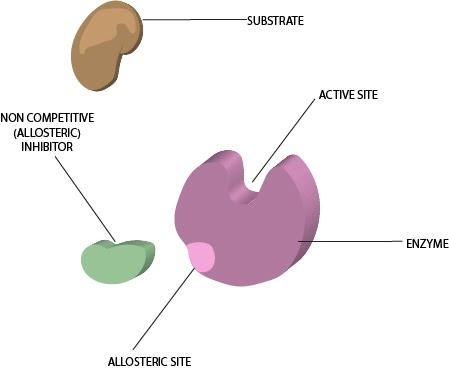
What is an allosteric enzyme?
Answer
427.8k+ views
2 likes
Hint: They are the enzymes that help in the change in the structure of the molecule when it is bound to the molecule. This also changes the affinity of the binding of the molecules. It helps in the process of metabolism.
Complete answer:
An allosteric enzyme is an enzyme that binds to the allosteric modulator that changes the conformational structure and when binds to the ligands then it results in the change in the structure of the ligand. This concept is called the allosteric concept which affects the binding of the ligand at one point and also affects the binding of the ligand at another point. This process helps in the functioning of the various metabolism regulation, cell signaling along with various other biological processes. In biochemistry, allostery is found to be the binding of the protein to an effector molecule instead of the active site of the enzyme.
The point at which the effector molecule binds is called the allosteric site. At this site, the protein binds to the effector molecule and may result in the conformational change and the change in the structure of the proteins. Those effectors that increase the activity of the proteins are called the allosteric activators, while those effectors that decrease the activity of the proteins are called the allosteric inhibitors. An example of allosteric regulation is the ability of the cell to adjust the active site. The example of allosteric enzymes are glycogen phosphorylase, aspartate transcarbamylase, phosphofructokinase, etc are used during the various metabolic pathways.

Allosteric Enzyme
Note:
The term allostery is derived from the Greek word allos, meaning ‘other’ and stereos, meaning ‘object’. This indicates that the active site and the regulatory site of an allosteric protein are different from each other. The first crystal structure of the allosteric enzyme was introduced by Max Perutz.
Complete answer:
An allosteric enzyme is an enzyme that binds to the allosteric modulator that changes the conformational structure and when binds to the ligands then it results in the change in the structure of the ligand. This concept is called the allosteric concept which affects the binding of the ligand at one point and also affects the binding of the ligand at another point. This process helps in the functioning of the various metabolism regulation, cell signaling along with various other biological processes. In biochemistry, allostery is found to be the binding of the protein to an effector molecule instead of the active site of the enzyme.
The point at which the effector molecule binds is called the allosteric site. At this site, the protein binds to the effector molecule and may result in the conformational change and the change in the structure of the proteins. Those effectors that increase the activity of the proteins are called the allosteric activators, while those effectors that decrease the activity of the proteins are called the allosteric inhibitors. An example of allosteric regulation is the ability of the cell to adjust the active site. The example of allosteric enzymes are glycogen phosphorylase, aspartate transcarbamylase, phosphofructokinase, etc are used during the various metabolic pathways.

Allosteric Enzyme
Note:
The term allostery is derived from the Greek word allos, meaning ‘other’ and stereos, meaning ‘object’. This indicates that the active site and the regulatory site of an allosteric protein are different from each other. The first crystal structure of the allosteric enzyme was introduced by Max Perutz.
Recently Updated Pages
Express the following as a fraction and simplify a class 7 maths CBSE

The length and width of a rectangle are in ratio of class 7 maths CBSE

The ratio of the income to the expenditure of a family class 7 maths CBSE

How do you write 025 million in scientific notatio class 7 maths CBSE

How do you convert 295 meters per second to kilometers class 7 maths CBSE

Write the following in Roman numerals 25819 class 7 maths CBSE

Trending doubts
State and prove Bernoullis theorem class 11 physics CBSE

What are Quantum numbers Explain the quantum number class 11 chemistry CBSE

Write the differences between monocot plants and dicot class 11 biology CBSE

1 ton equals to A 100 kg B 1000 kg C 10 kg D 10000 class 11 physics CBSE

State the laws of reflection of light

One Metric ton is equal to kg A 10000 B 1000 C 100 class 11 physics CBSE




